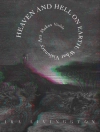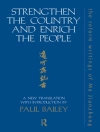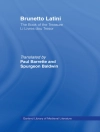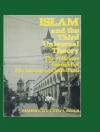The topic of ’Kafka after Kafka’ is a fascinating one: the engagement of artists, philosophers, and critics in dialogical exchange with Kafka’s works. The present collection of new essays highlights the engagement of lesser knownartists and commentators with Kafka, and represents those who
are well known, such as Arendt, Blanchot, Nabokov, and Coetzee, from new perspectives. The eleven essays contained here represent the most recent scholarly engagements with this topic. An essay on major trends in current Kafka criticism provides background for several essays on novelists, philosophers, and critics whose relationship to Kafka is not very well known. A section devoted to Kafka from an Israeli perspective includes artists not commonly known in the US or Europe (Ya’acov Shteinberg, Hezi Leskly, Sayed Kashua), as well as an essay on the recent trial in Israel regarding the fate of Kafka’s literary legacy. A final section addresses important contemporary approaches to Kafka in film studies, animal studies, the graphic novel, and in postmodern culture and counterculture.
Contributors: Iris Bruce, Stanley Corngold, Amir Engel, Mark H. Gelber, Sander L. Gilman, Caroline Jessen, Tali Latowicki, Michael G. Levine, Ido Lewit, Vivian Liska, Alana Sobelman.
Iris Bruce is Associate Professor of German at Mc Master University. Mark H. Gelber is Senior Professor and Director of the Center for Austrian and German Studies at Ben-Gurion University.
Innehållsförteckning
Introduction – Iris Bruce and Mark H. Gelber
PART 1. PHILOSOPHICAL AND LITERARY HERMENEUTICS AFTER THE HOLOCAUST
Tradition of Loss: Werner Kraft on Franz Kafka – Caroline Jessen
A Brave New World: Hannah Arendt’s Postwar Reading of Kafka – Amir Engel
Binding Words: Sarah Kofman, Maurice Blanchot, Franz Kafka, and the Holocaust – Alana Sobelman
Kafka as the Exemplary Subject of Recent Dominant Critical Approaches – Stanley Corngold
PART 2. KAFKA IN ISRAELI CULTURAL SPACE
Kafka and Brod after the Trial and Judgments in Israel – Mark H. Gelber
’A Nightingale whose Tongue was Chopped’: The Melancholic Writing Machine in Jacob Steinberg’s and Hezi Leskly’s Poetry, after Kafka – Tali Latowicki
Exiles in Their Own Lands: Kafka and Sayed Kashua – Iris Bruce
PART 3. KAFKA FROM MODERNISM TO POSTMODERNISM
The Beetle and the Butterfly: Nabokov’s Lecture on Kafka’s
The Metamorphosis – Vivian Liska
’When the Still Image Projected on the Screen Bursts into Movement’: Cinematic Space-Time in Kafka’s ’A Country Doctor’ – Ido Lewit
After the Animal: Kafka, Monstrosity, and the Graphic Novel – Michael G. Levine
Kafkas after Kafka: Anglophone Poetry and the Image of Kafka – Sander L. Gilman
Notes on the Contributors












